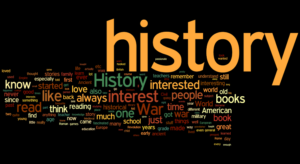Back to: Religion and National Value JSS2
Welcome to class!
In today’s class, we’re going to be talking about sources of history. I trust you will enjoy the class!
Sources of History

History is like a vast puzzle, and sources are the pieces that help us see the complete picture. These sources provide evidence about the past and allow us to understand how people lived, what they believed, and what events occurred.
What are Historical Sources?

– Historical Sources are the materials from which historians gather information about the past.
– They can be primary or secondary sources.
Primary History Sources
– Primary Sources are first-hand accounts created during the time being studied.
– They include:
– Documents: Letters, diaries, government records, and newspapers.
– Artifacts: Tools, clothing, and coins.
– Oral Histories: Interviews and eyewitness accounts.
– Visual Sources: Photographs, paintings, and films.
Secondary Sources
– Secondary Sources are interpretations or analyses based on primary sources.
– They include:
– Books: Textbooks and biographies.
– Articles: Scholarly journals and magazine articles.
– Documentaries: Films or television programs about historical events.
– Websites: Educational sites maintained by reputable institutions.
Importance of Each History Sources

– Authenticity: Sources help verify the authenticity of historical narratives.
– Perspective: They provide multiple perspectives on events.
– Context: Sources give context to historical events, helping us understand why they happened.
Evaluating History Sources
– Authorship: Who created the source and why?
– Bias: Does the source present information objectively or subjectively?
– Time: When was the source created relative to the events it describes?
– Relevance: How does the source contribute to our understanding of the past?
Examples of Historical Sources
– The Rosetta Stone: A primary source that helped decode Egyptian hieroglyphs.
– Anne Frank’s Diary: A personal account of life during the Holocaust.
– Nigerian Independence Documents: Records of Nigeria’s path to independence.
Activities to Engage with Sources
– Source Analysis: Examine different sources to answer historical questions.
– Role-Playing: Act out historical events using primary source scripts.
– Artifact Creation: Design an artifact that could be a source for future historians.
Understanding the sources of history is crucial for people as it lays the foundation for historical inquiry and critical thinking. By studying these sources, you will become detectives of the past, piecing together evidence to form a clearer picture of human history.
We have come to the end of today’s class. I hope you enjoyed the class!
In the next class, we shall be discussing The Significance of History.
In case you require further assistance or have any questions, feel free to ask in the comment section below, and trust us to respond as soon as possible. Cheers!
Question Time:
- What is the difference between a primary and a secondary source? Give an example of each.
- Choose a historical event and identify two different types of sources that could provide information about it.
- How can you determine the reliability of a historical source?
- What is bias in historical sources, and why is it important to recognize it?
- Why is it necessary to consider the context in which a historical source was created?
